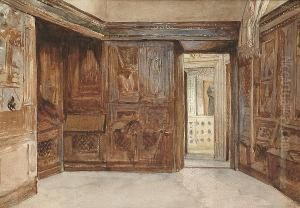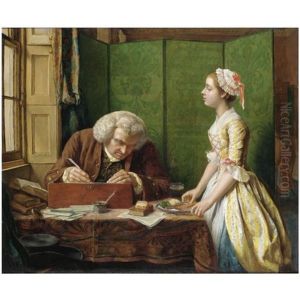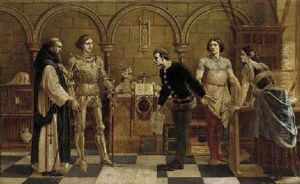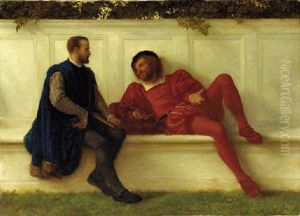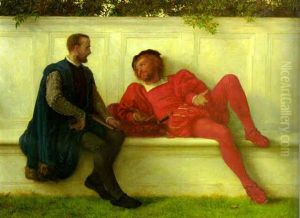Henry Wallis Paintings
Henry Wallis was a British painter, writer, and collector, best known for his history paintings in the Pre-Raphaelite style. Wallis was born in London on June 21, 1830. He was originally apprenticed to a firm of publishers, but his interest in art led him to pursue a career as a painter. His early works were influenced by the Nazarenes, a group of German artists who aimed to revive honesty and spirituality in Christian art.
In the 1850s, Wallis became associated with the Pre-Raphaelite Brotherhood, a group of English painters, poets, and art critics, who sought to reform the art by rejecting what they considered to be the mechanistic approach first adopted by the Mannerist artists who succeeded Raphael and Michelangelo. Wallis's most famous painting, 'The Death of Chatterton' (1856), is a quintessential example of Pre-Raphaelite art and is noted for its intense emotion, attention to detail, and vivid colors. The painting depicts the young 18th-century poet Thomas Chatterton, who committed suicide at the age of 17. This work was exhibited at the Royal Academy and received widespread acclaim.
Throughout his life, Wallis produced a limited but respected body of work. His subjects ranged from historical figures to scenes from literature and the Bible. In addition to painting, Wallis also had a keen interest in antiques and pottery and was known to have collected pieces from various cultures. He contributed articles on art to various periodicals and even tried his hand at writing poetry.
Despite his contributions to art and his association with prominent artists of the time, Wallis did not achieve significant financial success and his reputation waned in his later years. He spent his final years in relative obscurity, dedicating much of his time to his collections. Henry Wallis died on December 20, 1916. Today, his work is held in several important collections, and 'The Death of Chatterton' remains an iconic image of the Pre-Raphaelite movement.









